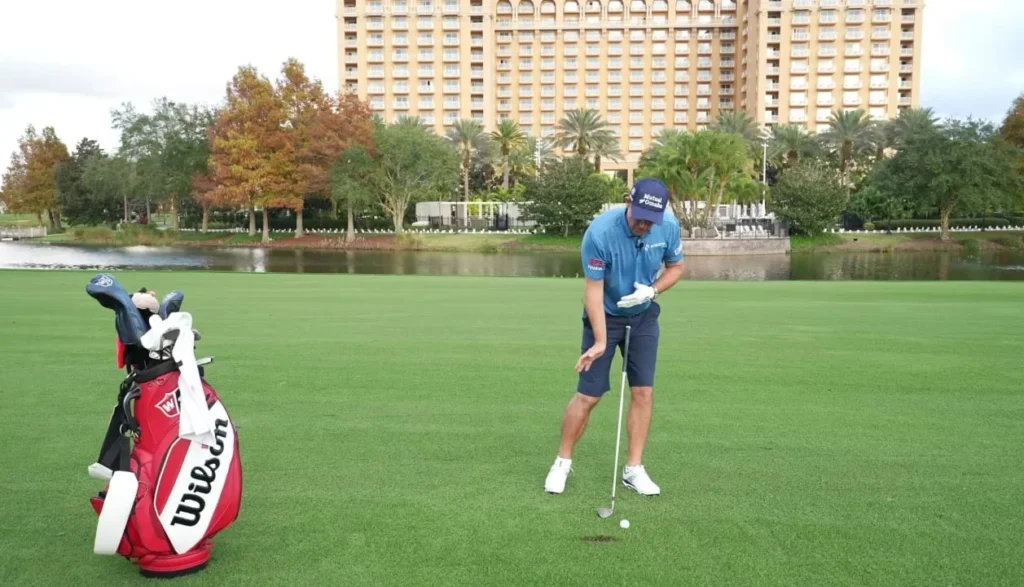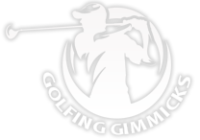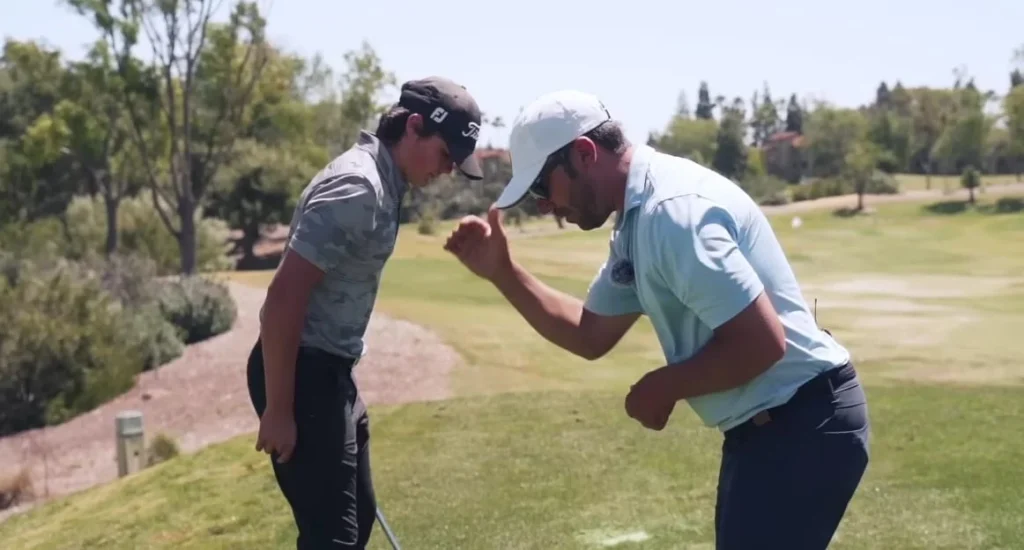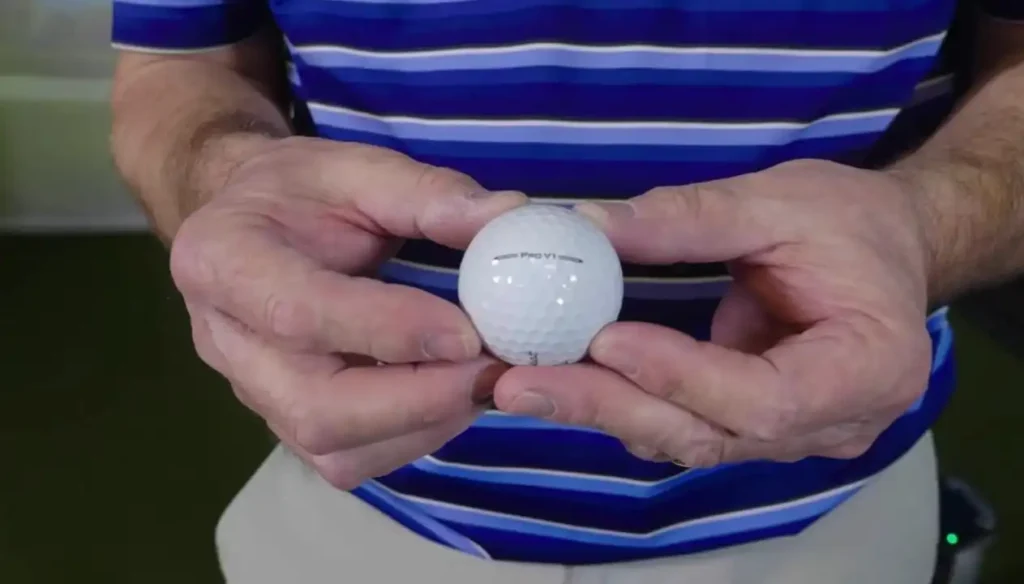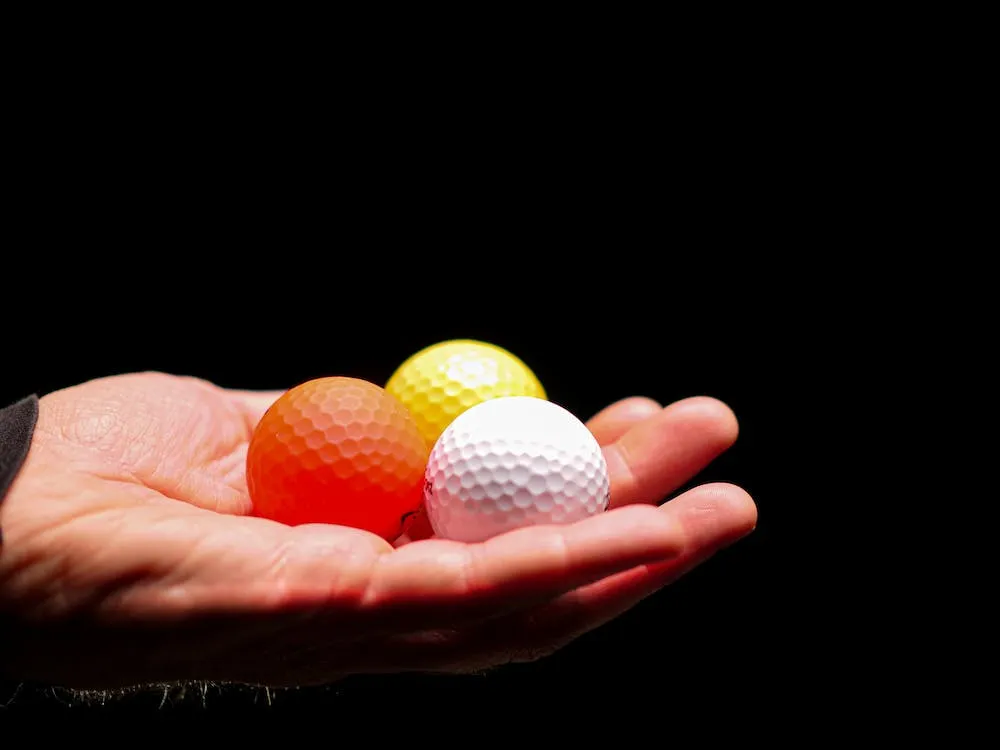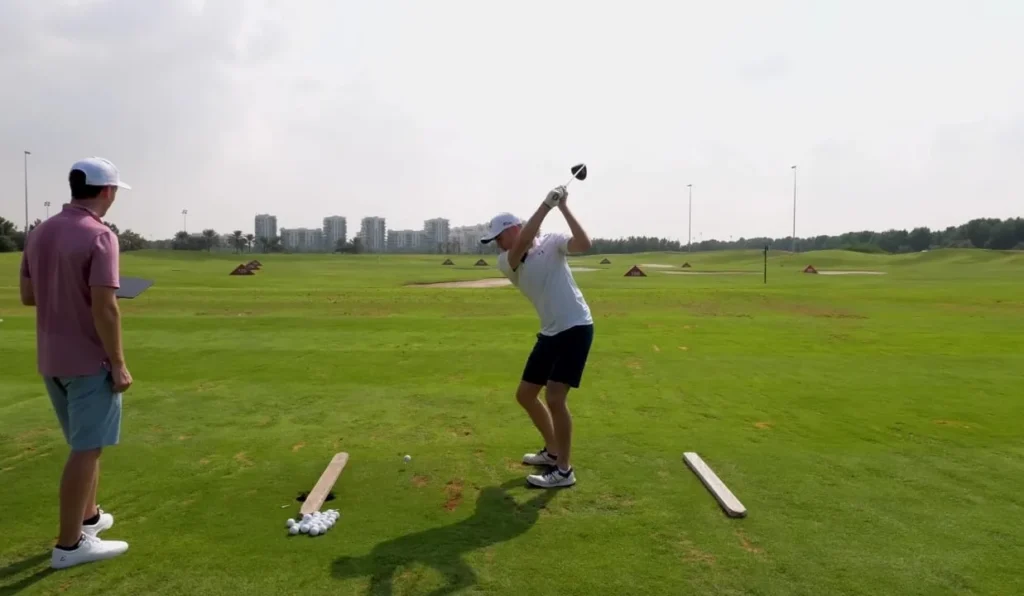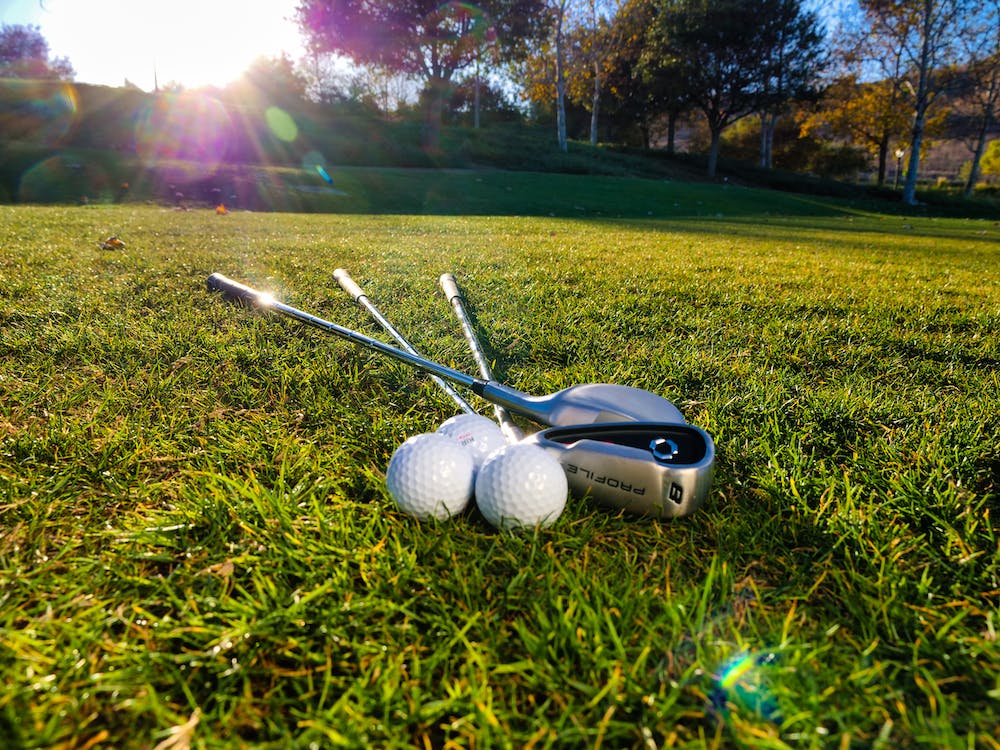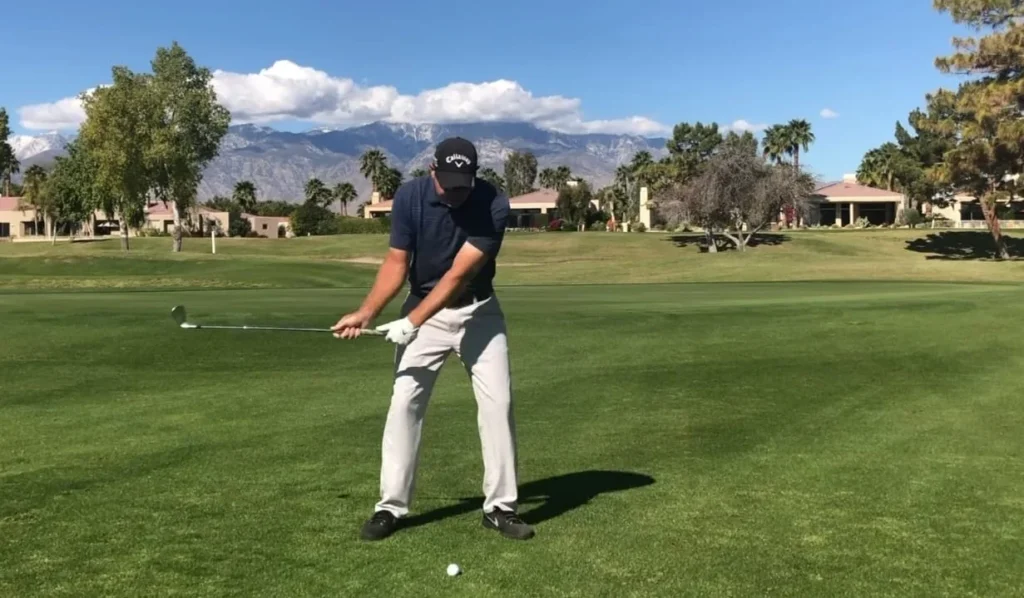Okay, you are probably not the first person to say, “I’m hooking my driver” when making a shot. What’s a hook, why does it happen, and how do you overcome it? This article will discuss some prominent causes of a hook in golf. In simple terms, a hook is an extremely sharp curve from right to left (for right-handed golfers). When executed perfectly, a hook shot can be an amazing weapon in one’s golfer arsenal; unintended hook shots, however, may lead to missed targets or lost strokes.
In this comprehensive guide, we will examine both its causes as well as strategies to fix a hook. We’ll also explore different occasions where intentionally striking off-center could even prove advantageous.

What is a Hook in Golf?
Hooking refers to ball flights characterized by sharp lateral movement in either direction i.e., right to left (for right-handed players) or left to right (left-handed golfers), and follows a similar path as a draw but with greater curvature. They can occur with any club; drivers, fairway woods, and hybrids often create more noticeable hooks due to their more powerful trajectory curves.
So, what’s so evil about a hook, and why do we need to fix one? Unintentional hooks often lead to shots missing their targets entirely on the left side, leading to major distance and accuracy losses. Before finding out how to fix a hook, let’s explore some common causes of a hook in golf. For that, we have to look at the shape a hooked shot makes when a ball hits the clubface.
Understanding the Shot Shape
- Curve Dynamics: When playing the hook shot, its flight path resembles that of a draw but with increased lateral movement.
- Club Selection Influences: Although any club can achieve it, drivers, fairway woods, and hybrids tend to produce greater hook shots.

What Causes Hooking?
Let’s look into some obvious causes of a hook in golf. In this section, we’ll discuss why hooking happens so we can fix a hook. So, make sure you are making these mistakes:
1. Closed Clubface at Impact
Hooking occurs due to misalignment between a closed clubface and swing path at impact. As such, this causes the ball to deviate off its intended path, producing a hook effect.
2. Culprits Behind a Closed Clubface
Establishing the specific causes for a closed clubface is essential:
- Grip issues: Overly strong grips contribute to closed clubfaces; making adjustments can make an enormous difference in results.
- Body Rotation Deficits: Failing to fully rotate oneself through each shot can result in hooking.
- Connection and Timing issues: Mistimed movements between arms and bodies may lead to unexpected clubface closure and create hooking issues.
- Club Path Dynamics: An inside-out club path increases your odds of hooking, being of the major causes of a hook in golf.
- Wrist Action Challenges: Insufficient wrist action (particularly from right-handers) alters clubface orientation and necessitates adjustments during driving practice.
3. Additional Hooking Factors
Outside of its primary causes, several other factors can contribute to hooks:
- Crossed Setup Lines: Misalignment in the setup can impact the swing path, leading to hooking.
- Shallow Swing Paths: Paths that are too shallow may exacerbate hooking tendencies and increase hooking potential.
- Over-the-Top Movement: Hitting shots over the top with a closed clubface can result in hooking shots.
- Legs’ Role: Failing to incorporate proper leg movement can drastically change shot results and ruin shots.
4. The Challenge of Square Face at Impact
Golfers commonly struggle to achieve a square clubface at impact. When this fails, hooks often occur due to misalignment in their clubface and cause unnecessary mishits. Now, you probably understand some telltale causes of a hook in golf and we can move on to treating this problem.
How to Fix Your Golf Hook?
So, how do you fix a hook? In this section, we will discuss some ways to fix your hook. You can now, hopefully, do something to fix your golf hook. If you are uttering “I’m hooking my driver”, then reading this article is your go-to solution.
1. Proper Grip and Setup
Make sure that your grip isn’t too strong; an ideal position would have your thumb pointing slightly right of the shaft’s top. Use Swing Align to ensure your shoulders align parallel to the target and reduce hook-induced shots.
2. Square the Face at Impact
Establish a consistent setup with a square face. Practice well-connected swings without flipping arms or hands over, using a Swing Junction or an alignment rod to check that the clubface at impact remains square and perpendicular to the target line.
3. Addressing Swing Path
Correcting an outside-to-in swing path is of utmost importance, so practice using alignment rods to visualize an inward-to-out path and gradually progress from short swings towards full ones while keeping in mind square clubface and controlled shots.

How to Intentionally Hook a Golf Ball?
Hooking a golf ball intentionally may not be recommended in everyday play, but can prove effective under specific conditions. If you want to cure the causes of a hook in golf and stop hooking golf ball with irons, then you should do this:
1. Strengthen Your Grip
Create a stronger grip by moving the bottom hand under and the top hand more forward; this facilitates clubface rotation and an immovable face at impact.
2. Close Your Stance
Shifting your trail foot back creates a closed stance and encourages an inside-to-out swing path, increasing the chances of an effective hook shot.
3. Inside-to-Out Swing
Practice swinging from inside to out, making sure that the clubhead crosses Swing Junction on the downswing. Use drills such as split grip to encourage body rotation and openness through impact.
Troubleshooting Common Hook Variations
Let’s talk about some hook variations and troubleshoot these problems. You can now overcome the common causes of a hook in golf, then you should try these suggestions:
1. Pull Hook
Pull hooking involves the ball starting left and curving more left; to address it effectively use lower body transitional techniques while maintaining spine tilt.
2. Snap Hook
Snap hooking requires weight shift and squared clubface at impact to achieve success, along with proper grip and wrist position to achieve better results. Correct these factors for improved results.
3. Duck Hook
Combat the duck hook by practicing with a closed clubface position, altering your weight distribution, and refining your swing sequence.
4. Driver Hook
Setting and tempo can both play a factor in driver hook. If you wish to address it, evaluate your setup, weight transfer, wrist position, and swing path before trying anything drastic to the club itself.
Golf Tools for the hook Shots in golf
If you are looking to improve your golf shots and avoid hooking, we have some fantastic products for you to achieve that very goal. Check out these Amazon products and take your golf skills to new heights. Buy the right training aids, speed traps, and alignment rods to take your skills to another level. Now, your job is to go through these products, compare their pros and cons, check out the latest reviews, and buy something that helps you become a better golfers. All these products have been carefully selected to tackle the common causes of hook in golf. We hope that you’ll soon be a hook-free golfer thanks to all these products:
| Golf Swing Trainer – Improves Alignment, Connection, Rotation. Fits XL Golfers. | More Information |
| Golf Training Aid, Golf Swing Aid Helps with Clubface Awareness | More Information |
| Golf Speed Trap, Build Hook Corrector, Made in USA | More Information |
| Golf Sticks Alignment Golf Training Aid | More Information |
| Golf Alignment Rods – Upgraded Magnetic Golf Club Alignment Stick | More Information |
Conclusion
Hopefully, you have now developed a deeper understanding of the common causes of a hook in golf. A hook in golf is a shot that starts to the right of the target line for right-handed golfers and curves to the left. For left-handed golfers, a hook curves to the right. Hooks are similar to draws but have more lateral movement. Hooks are usually unwanted and uncontrolled. They can be hit with any club, but are most drastic with drivers, fairway woods, and hybrids. Hooked shots miss the target to the left and lose distance compared to straighter shots. Here’s how you can fix a hook:
- Remember shifting your weight
- Don’t forget to turn your body all the way through the shot
- The club face shouldn’t be closed to either your swing path or the target
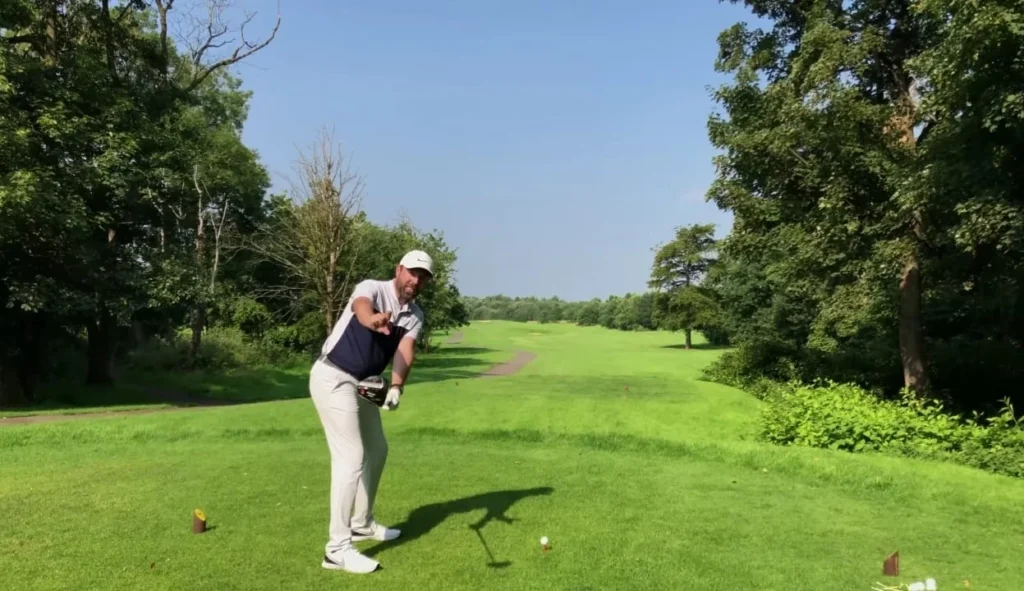
Golf Hook FAQs: Causes of a Hook in Golf
What is a hook in golf?
Hooking in golf refers to any shot with an abrupt curve that cuts from right-handed golfers’ left wrist to their right wrist and vice versa for lefties, producing an unusual flight path characterized by significant sideways movement (more so than normal draw shots).
How do you hook a golf ball?
If you wish to intentionally hook a golf ball, follow these steps:
- Adjust Your Grip: Take control and create a solid hold by rotating your bottom hand beneath the club and positioning its V formation with thumb and forefinger towards your lead shoulder.
- Closed Stance: Assume an upright posture by adopting a closed stance with your feet and shoulders aligned left of your target for right-handed golfers.
- Indoor/Outdoor Swing Path: Visualize and execute an in/out swing path so that the clubhead travels from inside of the target line through the impact point to finish it all out inside it all before impact.
- Focus on Body Rotation: Prioritize full body rotation during your swing to promote a closed clubface at impact and ensure an even swing path.
What causes a hook in golf?
Several factors can contribute to a hook in golf:
- Closed Clubface: At impact, when the clubface closes relative to the swing path it results in a hook shot.
- Grip Issues: An excessively strong grip where one hand rotates too far underneath can contribute to a closed clubface.
- Body Rotation: Either too little or too much body rotation can alter clubface position and lead to hooks.
- Swing Path: Swing paths that feature extreme inside-to-out swing path movement often contribute to hooks.
- Wrist Action: Poor wrist action such as having one’s right hand flip over can result in a closed clubface.
What causes a pull hook with the driver?
Pull hooking occurs when the ball begins left and curves even further to the left after leaving its starting spot. Potential causes could include:
- Over-the-Top Swing Path: An outside-to-inside swing path featuring an aggressive over-the-top motion that often results in pull hooking with drivers.
- Closed Clubface: At impact, the clubface is significantly positioned leftward, further exacerbating leftward curvature.
- Grip Issues: An excessive grip or poor coordination/timing between arms and body may contribute to pull hooking of shots.
- Hip Movement: If the hips shift away from the target during a backswing, resulting in a pull hook swing can happen.
Why am I duck-hooking my driver?
Duckhooking the driver can be caused by many different factors:
- Closed Clubface: Too narrow of an impact point for optimal clubface clearance.
- Grip Issues: An inappropriate grip that’s either too strong or placed too far to the right of the centerline at impact.
- Body Rotation: Insufficient body rotation during each shot are three possible culprits of driver duck hooks.
- Weight Shifting: Avoid moving forward during a downswing by not shifting weight forward.
Why am I hooking my driver?
Hooking your driver may result from several causes:
- Setup and Stance issues: Incorrect setup/stance can contribute to driver hooking.
- Wrist Position Concerns: Failure to achieve optimal wrist positions during swing are further cause for hooks.
- Problematic Swing Path and Plane: Trouble with your swing path or plane could result in an arm hook.
How to fix a hook in golf?
If you wish to fix a hook in golf, consider the following tips:
- Grip Adjustment: Be certain your grip is neutral with V’s between thumb and index finger pointing directly upward.
- Clubface Alignment: Adjust the clubface correctly at the start of every swing.
- Swing Path Correction: Maintain an inside-to-out swing path.
- Body Rotation: Emphasize full body rotation throughout your swing.
- Weight Shift: To move weight forward on the downswing.
How to fix a hook in a golf swing?
If you wish to fix a hook in your golf swing, follow these steps:
- Proper Grip: Position the thumb of your lead hand into the center of the club grip, and make adjustments so your bottom hand remains neutral.
- Swing Path Correction: Concentrate on producing an even inside-to-out swing path.
- Wrist Action: Keep your lead wrist flat during swing initiation for maximum success.
- Impact Position: Square the clubface at impact to ensure more accurate shots.
- Equipment Check: Make sure that your clubs fit perfectly for your swing style.
How to fix a hook with the driver?
If you want to fix a hook with the driver, try the following adjustments:
- Setup and Stance: Prioritise proper setup with an open stance.
- Grip Modification: Implement neutral grip modification that limits hand rotation for optimal play.
- Swing Path: Emphasize inside-to-out swing paths when selecting driver shots.
- Body Rotation: Encourage full body rotation while swinging.
- Weight Transfer: When on the downswing, shift your weight gradually from behind into front for maximum effectiveness.
How to hook and slice a golf ball?
Mastering the art of intentionally hooking and slicing golf shots requires understanding its mechanics as well as making adjustments accordingly. Please refer to “Mastering the Art of Golf Shot Shaping: Hooking and Slicing” for comprehensive information about how you can execute these shots purposely.
